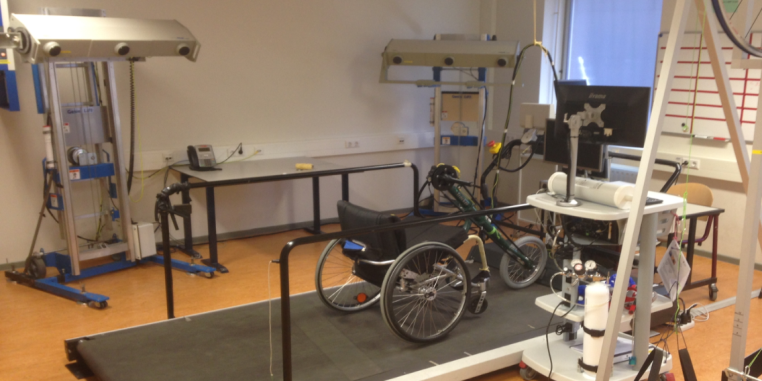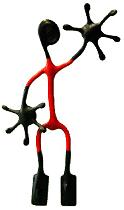

The use of a wheelchair is mechanically inefficient and hand-rim propulsion can often contribute to overuse injuries around the shoulder joint, due to its repetitive characteristic. Since the eighties of the last century, handcycling has become an important alternative to hand-rim propulsion in wheelchair-dependent individuals, since the capacity to deliver power is limited in this group. In daily living, the add-on handcycle is often used outdoors. The add-on handcycle consists of a crank system, which can be attached to the wheelchair in front of the user, and made handcycling widely available. It usually has multiple gears, to enable cycling in different cadences and at different speeds so that longer distances can be reached. The earlier handcycles were based on bicycle technology, and therefore, had an asynchronous crank mode. This crank mode is still seen in non-Western countries nowadays. However, in the Western countries, the handcycles are in a synchronous crank mode (Dallmeijer, 2004; Hettinga, 2010).
The aim of the promotion is to investigate the effects of different handcycle settings on the efficiency and propulsion technique during sub-maximal exercise. In order to do so, gear, imposed resistance and crank mode will be altered and the kinetics, kinematics, physiological parameters and muscle activation will be measured. From this data, efficiency can be calculated and dynamical analyses can be performed to understand the underlying mechanisms of handcycling.
During the last two months, Cassandra visited Groningen twice. The first time she ordered her experimental data and looked into them. She has made first steps into comparing the synchronous and asynchronous conditions of her hand cycling experiments. During the second visit she met Yves VanLandewijck (KU Leuven) who is member of the IPC (international paralympic committee). They also looked into the mysterious finding that the power is different even if all other settings are the same.
Currently Cassandra revises her first paper.
Over the coming months she will visit the ESB (Sevilla) and Science & Cycling (Düsseldorf), and will further process her data. Cassandra will perform het teaching duties.
PIs: Cassandra KraaijenbrinkK, H. Wagner
Cooperations (with pics): L. van der Woude, R. Vegter
Dallmeijer AJ, Zentgraaff ID, Zijp NI, van der Woude LH. Submaximal physical strain and peak performance in handcycling versus handrim wheelchair propulsion. Spinal Cord. 2004;42(2):91-98.
Hettinga FJ, Valent L, Groen W, van Drongelen S, de Groot S, van der Woude LH. Hand-cycling: An active form of wheeled mobility, recreation, and sports. Phys Med Rehabil Clin N Am. 2010;21(1):127-140.


